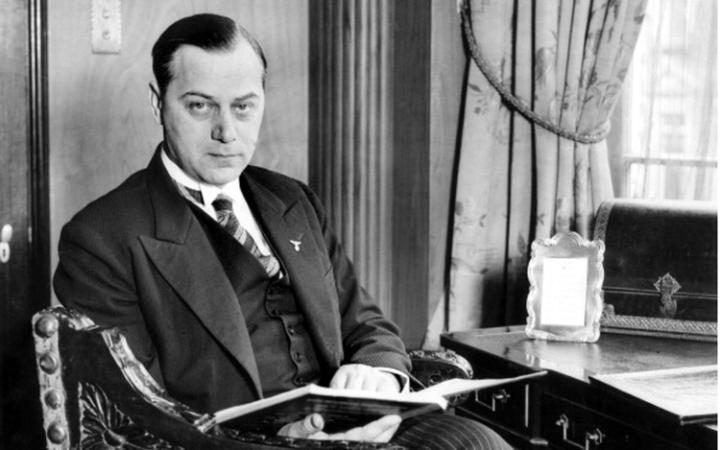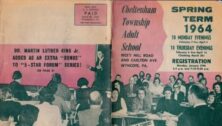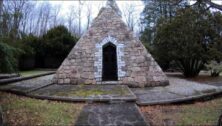Lansdowne at Center of Hunt for Secret Nazi Diary

Robert Wittman, the head of the FBI’s art-crime team in Philadelphia, has collaborated with Pulitzer Prizing-winning author and journalist David Kinney to write The Devil’s Diary – the story of the pair’s hunt for the missing diary of Alfred Rosenberg, a high-ranking Nazi, and the deadly epic story it illuminates.
Interestingly, Wittman and Kinney’s odyssey led them to Delaware County, Lansdowne to be specific.
A fascinating feature in the Philadelphia Inquirer by Stephan Salisbury details the quest to recover the diary, which was prompted by Henry Mayer, chief archivist at the U.S. Holocaust Memorial Museum in Washington, who badly wanted the diary.
“I knew it had a lot of information,” Wittman told the Inquirer. “Nowhere is it written down, anywhere, that Hitler ordered the killing of the Jews. There is no diary, no journal or memo that mentions extermination. We thought this could be it.”
It took more than a decade to track down and recover Rosenberg’s secret musings.
Rosenberg served as the “chief intellectual” of the Third Reich, tirelessly formulating and promulgating its anti-Semitic message, which was largely his own.
“The commandant at Auschwitz, Rudolph Höss, said what allowed him to do these mass killings was that he had read the writings of Rosenberg, Hitler, and Goebbels,” said Wittman. “It’s really terrifying.”
The pursuit of this grim material led Wittman into the world of lawyer Robert Kempner, the late Nuremberg prosecutor and onetime Lansdowne resident, and his former lovers.
Rosenberg oversaw the looting of art, books, archives, and just about everything else. He supervised activities in the occupied territories east of Germany, including death camps, slave-labor programs, starvation policies, and unimaginable theft and destruction.
His 500-page diary covers the period from 1934 until Germany’s defeat in 1945. Along with tons of other documents, it was impounded at war’s end and served to underpin the immediate prosecution of Rosenberg and 21 other Nazi leaders for war crimes.
One of the American prosecutors was Kempner, a German-born lawyer who had escaped the country in 1935, eventually making his way to the Philadelphia area with his wife and also a lover/secretary.
After Rosenberg was hanged Oct. 16, 1946, Kempner stayed in Germany. As a Nuremberg prosecutor, he had gathered millions of Nazi documents, including Rosenberg’s four-ton archive. But instead of returning them to the Allies’ document centers as mandated, Kempner shipped all of this material to Lansdowne, where his wife and former lover were living.
Meanwhile, Kempner never returned to live in the United States, but he kept up a correspondence with those in Lansdowne, where the Rosenberg papers remained.
A few years after Kempner’s death, one of his former lovers contacted the Holocaust Museum and asked whether it would be interested in the Kempner archive.
Mayer, the archivist, eventually took a look in 1997 and found the Kempner house literally stuffed, basement to attic. The archivist quickly determined the Kempner papers were a gold mine, and Kempner’s estate bequeathed the archive to the museum.
It would take several years of legal wrangling to get them out of the Lansdowne house.
Click here to read more about the hunt for Rosenberg’s diary.
Join Our Community
Never miss a Delaware County story!
"*" indicates required fields




















![95000-1023_ACJ_BannerAd[1]](https://delco.today/wp-content/uploads/sites/3/2023/03/95000-1023_ACJ_BannerAd1.jpg)










